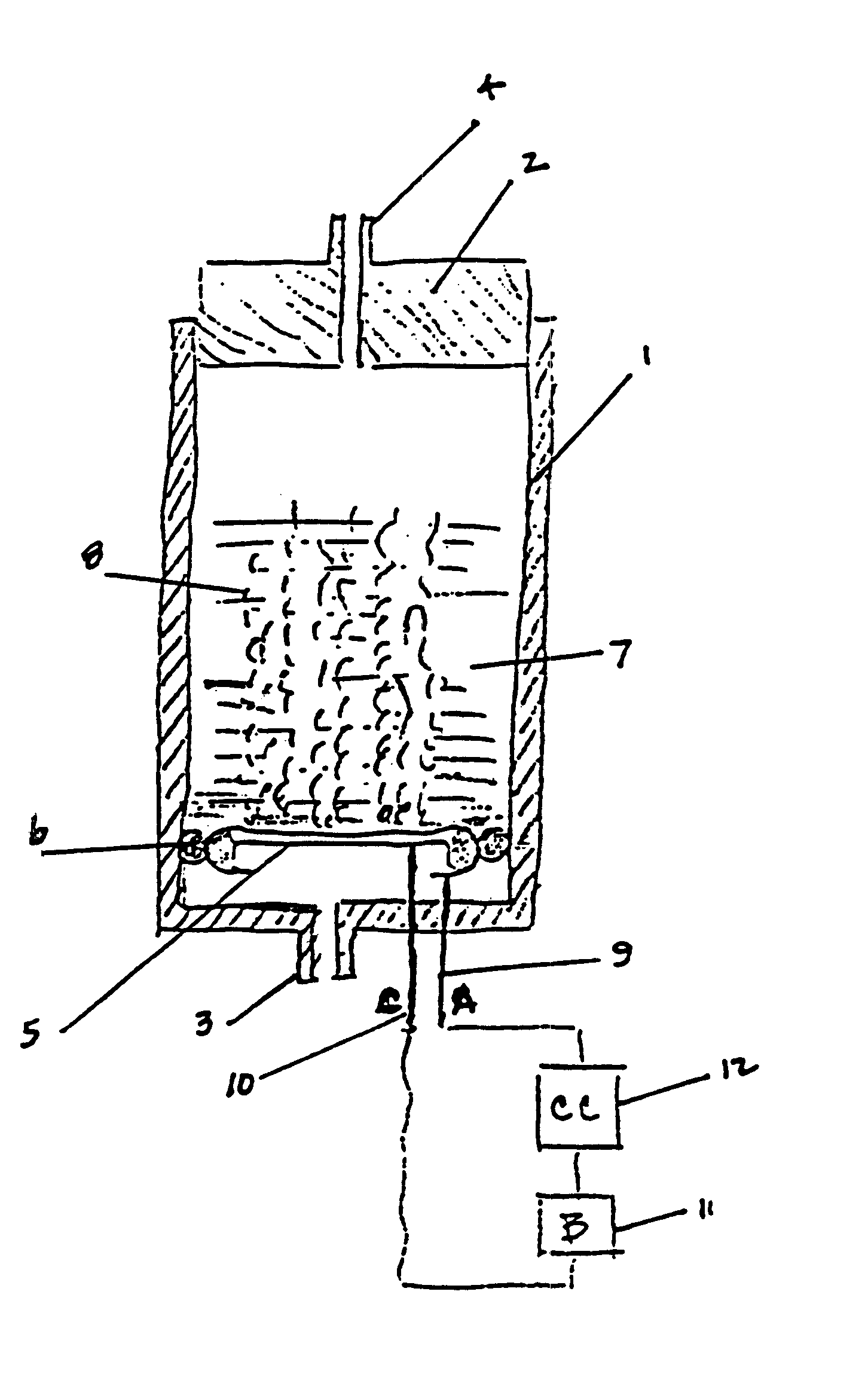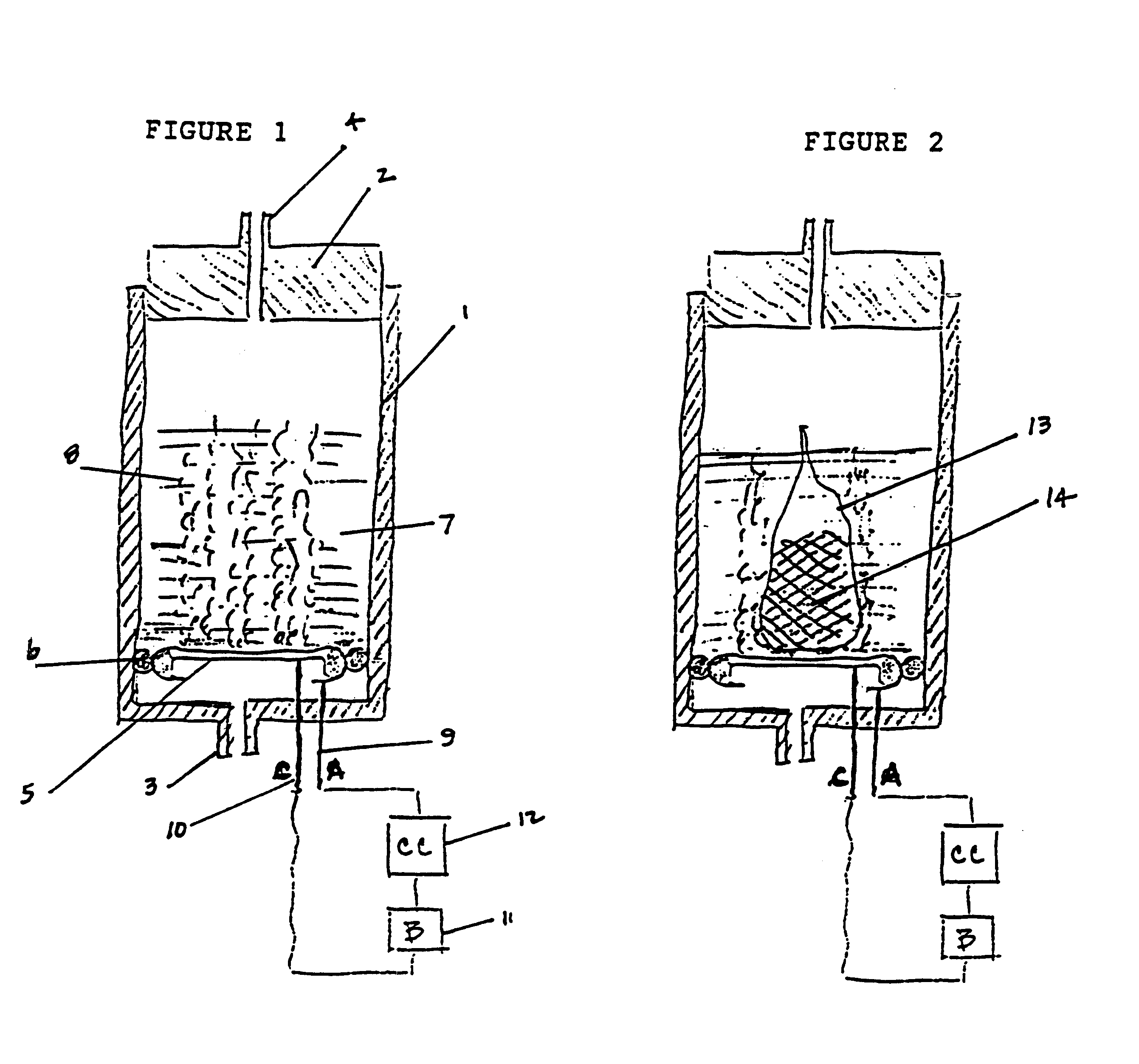Electrochemical generation of carbon dioxide and hydrogen from organic acids
- Summary
- Abstract
- Description
- Claims
- Application Information
AI Technical Summary
Benefits of technology
Problems solved by technology
Method used
Image
Examples
example ii
6.8 grams of oxalic acid, stored in a porous bag, are placed in 13.2 mL of deionized water. The current applied to the electrochemical cell is constant at 40 mA. The generator is operated continuously over a period of 87 hours. The average rate of gas generated at the anode is 33.8 cc / hr. The average rate of gas generated at the cathode is 16.6 cc / hr.
The gas composition of both anodic and cathodic streams is:
At the end of the test, the storage bag for the oxalic acid was visibly depleted of all solid acid.
example iii
A saturated solution of oxalic acid in deionized water was electrochemically decomposed by applying a battery voltage supplied by two series-connected alkaline AA batteries. By manually changing the resistance from a variable resistor box, it was possible to change the current and voltage applied to the electrochemical cell. The following results were observed:
PUM
| Property | Measurement | Unit |
|---|---|---|
| Volumetric flow rate | aaaaa | aaaaa |
| Volumetric flow rate | aaaaa | aaaaa |
| Volumetric flow rate | aaaaa | aaaaa |
Abstract
Description
Claims
Application Information
 Login to View More
Login to View More - R&D
- Intellectual Property
- Life Sciences
- Materials
- Tech Scout
- Unparalleled Data Quality
- Higher Quality Content
- 60% Fewer Hallucinations
Browse by: Latest US Patents, China's latest patents, Technical Efficacy Thesaurus, Application Domain, Technology Topic, Popular Technical Reports.
© 2025 PatSnap. All rights reserved.Legal|Privacy policy|Modern Slavery Act Transparency Statement|Sitemap|About US| Contact US: help@patsnap.com



